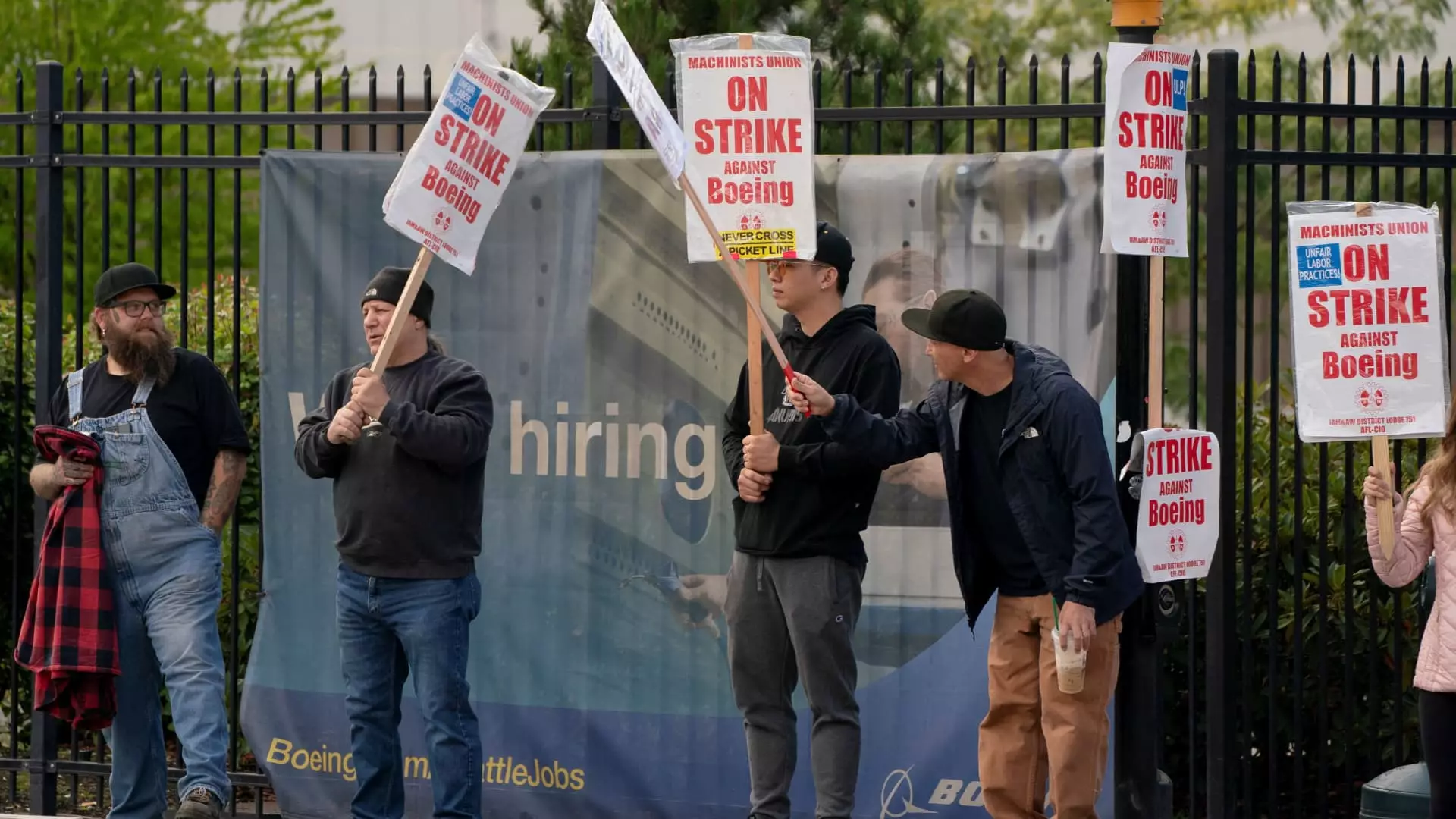Boeing is currently facing significant challenges that have compelled the aerospace giant to implement drastic measures to stabilize its operations. With over 30,000 factory workers initiating a strike after rejecting a tentative labor agreement, Boeing has found itself in a precarious position. The resultant halt in aircraft production, particularly in the Seattle area where most of its manufacturing occurs, has led Boeing to announce extensive cost-cutting measures aimed at preserving cash flow and mitigating the operational fallout.
In an effort to navigate these turbulent times, Boeing has instituted a hiring freeze and curtailed nonessential employee travel, signaling a shift towards austerity. Furthermore, the company plans to significantly reduce expenditures with suppliers, effectively halting most purchase orders for several key aircraft models including the 737 Max, 767, and 777. CFO Brian West conveyed these plans in a communication to staff, indicating a strategic pivot necessary to counteract the effects of the labor dispute and ensure financial prudence.
The ramifications of the strike extend beyond Boeing’s factory floors, impacting a web of suppliers that depend on the company for their business. West underscored the importance of reaching a new contract agreement that respects the workers’ demands while enabling production to resume as soon as possible. The ongoing labor disruption threatens not only the immediate financial health of Boeing but also poses risks to the broader supply chain, potentially straining the relationships that Boeing has fostered over years of collaboration.
As the strike unfolds, its financial implications remain uncertain and heavily linked to its duration. West mentioned that securing cash is a top priority during this tumultuous period. With the appointment of the new CEO, Kelly Ortberg, there is an urgent desire to return to negotiations and find common ground with striking workers. However, the looming threat of temporary furloughs for staff and management illustrates the gravity of the situation; Boeing’s operational challenges may lead to painful decisions that could further affect workforce morale and engagement.
The financial ramifications of the strikes have not gone unnoticed by credit agencies, with Moody’s placing Boeing’s credit ratings under review for a potential downgrade. Likewise, Fitch Ratings has warned that an extended strike could escalate risks for Boeing, increasing borrowing costs for a company already encumbered by substantial debt. The backdrop of a challenging operational environment is exacerbated by Boeing’s substantial cash burn, with $8 billion lost in just the first half of the year due to production slowdowns and operational setbacks.
Boeing’s current predicament highlights the delicate balance between labor relations and operational sustainability in the high-stakes world of aerospace manufacturing. As the company implements strategic cutbacks to weather the storm of the labor strike, it must also contemplate the longer-term implications for its workforce and supply chains. The road ahead will require deft management and a commitment to revitalizing negotiations with labor representatives, ensuring that efforts to stabilize finances do not come at the cost of long-term employee relationships and operational integrity.

